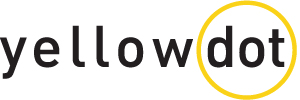So you’ve heard a lot about landing pages, you kind of have an idea about them, but when it gets right down to it, you wonder… just what exactly are they? If every page on my website is a page a visitor “lands” on, doesn’t that mean that every page on my website is a landing page? Isn’t my homepage the real landing page?
Let’s take some time to clear it all up.
When it comes to marketing, there are two types of landing pages: landing pages optimized for organic traffic (organic search, inbound links, referral), and landing pages optimized for campaign traffic (paid search, display ads, email marketing, social media marketing).
In either case, the purpose of a landing page is to convert visitors to potential or future clients. We’ll look at organically optimized landing pages first.
Organically optimized landing pages
Search engine optimized websites often contain many organically optimized landing pages. Simply put, these are pages on your website that are optimized for organic traffic. With organic traffic, you have less control over how a visitor arrives at your site than you do with your campaign traffic, so you’re really optimizing for the Lowest Common Denominator, meaning anyone and everyone who can come to your page.
Landing pages optimized for organic search will give you better conversion rates than if you let all visitors come to your homepage alone (which is, yes, a landing page). Think about it. On your homepage visitors still have poke around to find the information they want. Organically optimized landing pages bring people directly to the content they’re looking for.
In an ideal world, your website is full of organically optimized landing pages that: 1) focus on one topic; 2) are optimized for target keywords; and 3) convince visitors that you have what they need or want.
While every page on your website has the potential to be a landing page for organic traffic, you really need to step back and take another look. Do each of your website pages focus on only one topic? Is each page optimized for one keyword or keyword phrase? How effective is each page at converting your visitors into customers?
Campaign optimized landing pages
A campaign optimized landing page has one purpose: to capture your visitor’s information through the use of a form. Your campaign traffic is different than search traffic because you’re in control of where the traffic is coming from. You can capitalize on the ad, your message or offer, and the context of the call to action. When a visitor clicks on your ad, you send them to a specific landing page related to that unique offer. Campaign optimized landing pages are what you want to use for your Facebook and Google ads.
You don’t want any elements on the page that might lead visitors off your page without filling out the form. Remember, the sole purpose of this landing page is to get visitors to fill out the form. Reduce or eliminate menu items, callouts and other content so your visitors stay focused on two things: 1) your form; and 2) the content that makes them want to fill out the form.
Campaign landing pages can be long or short, depending on how much you need to say. It’s really a matter of what it takes to overcome objections.
A general rule of thumb is the more you’re asking of your visitor, the longer your page should be. If all you’re asking for is an email address in exchange for a free white paper, your page shouldn’t be that long. Asking for an email address isn’t really a big deal.
If you’re asking visitors to make a larger purchase, you need to have a longer landing page to answer their objections and reassure them that your product or service will solve their problem. Longer pages also give you a chance to build a connection with your visitors. With longer pages, make sure your priority content and form are above the fold so that they don’t have to scroll to get it.
Whether you’re building pages for organic or campaign traffic, if you follow these general guidelines you’ll be on the right track to increasing your traffic and revenue.
Write a headline that matches the search intent
The headline is the first thing the visitor sees. So partly for SEO and partly for maintaining a smooth transition between where your visitor came from and your page, your headline should be keyword-focused and match the search intent. Now this seems like common sense, but it’s surprising how easy it is to overlook. Don’t let your sales funnel fall apart because your ad says “Gift Baskets for Her” and your page headline reads “Gifts for Special Occasions and More”. Your visitors are looking for gift baskets, not gifts, and more importantly, for her. Write a headline that matches your ad and makes your visitors stay on the page.
Focus on one point per page
Research your keywords and keyword phrases, then create separate landing pages for each you want to rank for. An effective landing page is focused on one subject or topic. Make sure that each landing page delivers exactly what the visitor came here for. If you continue to ask yourself “Why would someone come to this particular page?” you won’t get sidetracked, upsell or wander off-path.
Make sure content is keyword-focused
Once you know what keyword you want your landing page to rank for, keep your content focused on those keywords or phrases so you can build up the page authority you need for the page to rank.
Keep your visitors engaged
Identify with visitors’ needs and pain points. It’s tempting to want to bombard them with everything you offer all at once, even if it’s just so you know you put it out there. The problem with that approach is that it focuses on what works for you instead of what works for your visitors. Don’t distract visitors with interruptive ads, pop-up windows, content, and rotating banners. Make it easy for them to find what they want and to know where to look to get it.
Call to Action
You don’t have a landing page if you don’t have a call to action. Each page has a goal and associated actions you want the visitor to take. The only way to get the visitor to your goal is to tell them what they should do next. Use clear, vibrant calls to action so they don’t leave your page because they had no reason to continue. For longer pages, break up your content along fold lines and repeat your calls to action. This way visitors can take action easily once you’ve overcome their objections.

